Prakash Pancholi Shows us how to Literally Paint With Light
For more stories like this, please subscribe to the Phoblographer.
“The fun starts when you combine both the ambient exposure and your drawing in the image”, says Prakash Pancholi, who resides in Dubai. An airline fleet superintendent by profession, Prakash spends his spare time crafting light painting tools in his home to use in his elaborately planned, slow shutter images. What started as a hobby kicked off by accidental light exposure in one of his images turned into a passion that evolved into a portfolio.
Light painting is one genre that I don’t have much patience for trying anymore. Not because long exposures don’t interest me, but because of the hit and miss nature of the results during most of my trials. Combining a moving light source with ambient light while simultaneously ensuring you don’t appear in the final exposure is something I haven’t conquered yet. Yet getting unpredictable results in a fun and appealing manner is something Prakash has spent years mastering using the techniques he describes below. Much like a magician would wave a wand to enthral an audience, Prakash uses many self-crafted tools to create unique portraits and landscape images with minimal or no post-processing. What makes it even more interesting is that he shoots many of these using just his smartphone nowadays.
The Essential Photo Gear of Prakash Pancholi
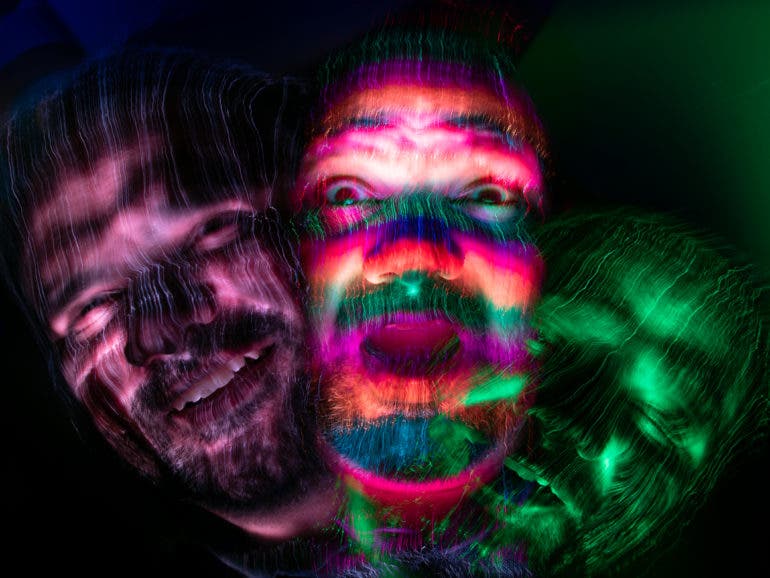
Prakash told us:
“With light painting, you don’t need to have expensive gear. Any material that will emit, reflect, or diffuse the light is a good tool. I mostly use acrylic sheets to make patterns, but I have used materials like my daughter’s pencil case, a chocolate wrapper, a sprite bottle, acrylic rods, a tennis ball.”
The Phoblographer: Tell us how you got into photography and more specifically how you got into light painting
Prakash Pancholi: Getting into photography happened 12 years ago when we knew we were going to have a child. So I bought myself a camera just like excited parents do and started documenting the whole journey. Then I just wanted to explore what do the different modes do, for which I started exploring online. I used to look at one thing, and the next thing, you see me trying it out. Somehow, I became quite amused [by] making images with one light, and this went on for about a few years.
One evening I was by AlSeef creek; we could still take our cars all the way to the edge of the water. I was exposing for buildings and trying to get that silky effect in the water, along with some boats. A car that was parked by the edge of the water decided to switch on its headlights which exposed a part of the boat, and I was furious, thinking that my shot was ruined. When I saw it at the back of the camera, I was quite pleased with the effect. What I saw next got me intrigued. I saw a light trail that was registered because of an aircraft. I looked up the internet searching for light trails, and there I was in the middle of these amazing images created using lights. That’s what got me introduced to light painting, and I was hooked.
The Phoblographer: What are some of your favourite light painting tools? Also, show us the results they produce
Prakash Pancholi: I don’t have any favourite tools, but I enjoy the process of making them. LED COBs give you access to endless possibilities. All you need is a bit of creativity and time. I also enjoy woodworking, so I tried mixing the two and make an orb tool to make me an orb (still can’t beat the fun of spinning an orb though). That I think is one of my favourite ones.

It is made out of 6mm plywood cut into a circle. I cut the circle in half and connected it with hinges so that I can fold it. Added a handle on top which will hold the switches, electronics and the battery. It has an LED strip on one half and a COB strip on the other half. Both are connected to a 12 Vol battery with a switch in between. I shot a few images with it. I will get shooting with more very soon as soon as I have some time. I have a few ideas in mind and [will] start shooting again soon.
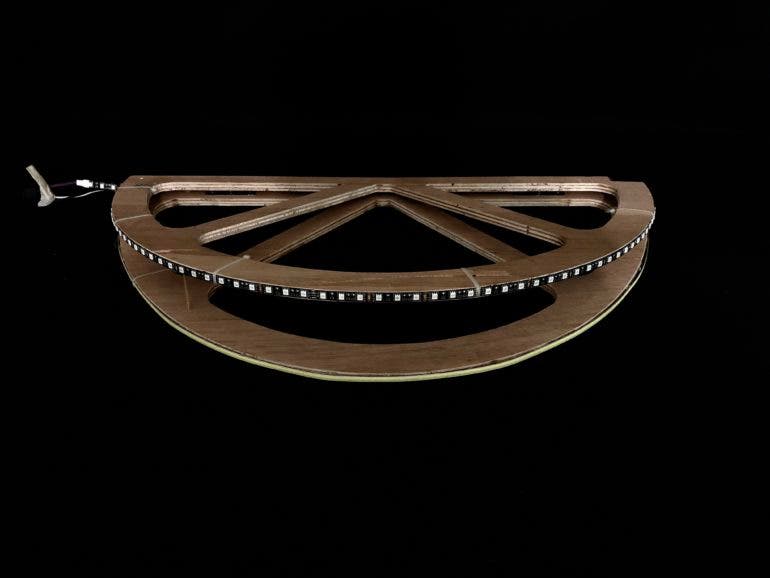
The Phoblographer: Getting subjects to stand very still while you craft these light patterns around them can’t be easy. What tips do you employ for this?
Prakash Pancholi: It’s not easy to hold your breath and stay in that “Space” for a while mostly in the dark, while some maniac is waving light around you. If it’s a seasoned model who understands, they are really good and will stand their ground; in some cases not even breathe. Those are great shoots. When I am shooting for an event at a photo booth then I expose the models or the group first because I know they will move as they are curious. Only when they see the image, they understand that they must not move.
It’s best to expose the subject first because any light from your LP source will be absorbed by the already exposed subject. You could do it after you have waved them, but I prefer to expose them first so that I can then concentrate on my light patterns.

The Phoblographer: There’s a lot of wiring and batteries in these tools. Have you ever been stopped by authorities and been asked to explain what you’re carrying when doing this outdoors?
Prakash Pancholi: Several times. Once, me and a few mates were in the Hajar mountains trying to shoot in the dark just before sunrise and lost our way. On the up the mountain, there was this little shed with two border police personnel. One of them raised his hands, and we thought that he is just saying a casual hello. So we waved, passed by him and were on our way uphill in the mountains. About 7 to 10 minutes later, we hear sirens, and the two personnel we just saw at the base were literally chasing us in their Humvee; we obviously stopped. One of them got out and was furious for us not stopping when he raised his hand. He made us go down to the base where his tent was and searched our car. I managed to remove the box that had home cooked lights with wire and batteries sticking out just out of his sight. After questioning us for about 15 minutes and checking our IDs, he let us go … phew ! (Pro tip) start learning vague sign language if you will be wandering in the mountains.
A second instance was when I was stopped at airport security when I had the Black LPB fibre optic in its plastic case. They made me open my bag and started laughing. I asked them why they laughed, they thought, it was a sex toy …
The Phoblographer: Given that you’re a DIY kind of person, what are your favourite materials to use when you make new light painting tools? What makes these better for your image results?
Prakash Pancholi: With light painting, you don’t need to have expensive gear. Any material that will emit, reflect, or diffuse the light is a good tool. I mostly use acrylic sheets to make patterns, but I have used materials like my daughter’s pencil case, a chocolate wrapper, a sprite bottle, acrylic rods, a tennis ball.
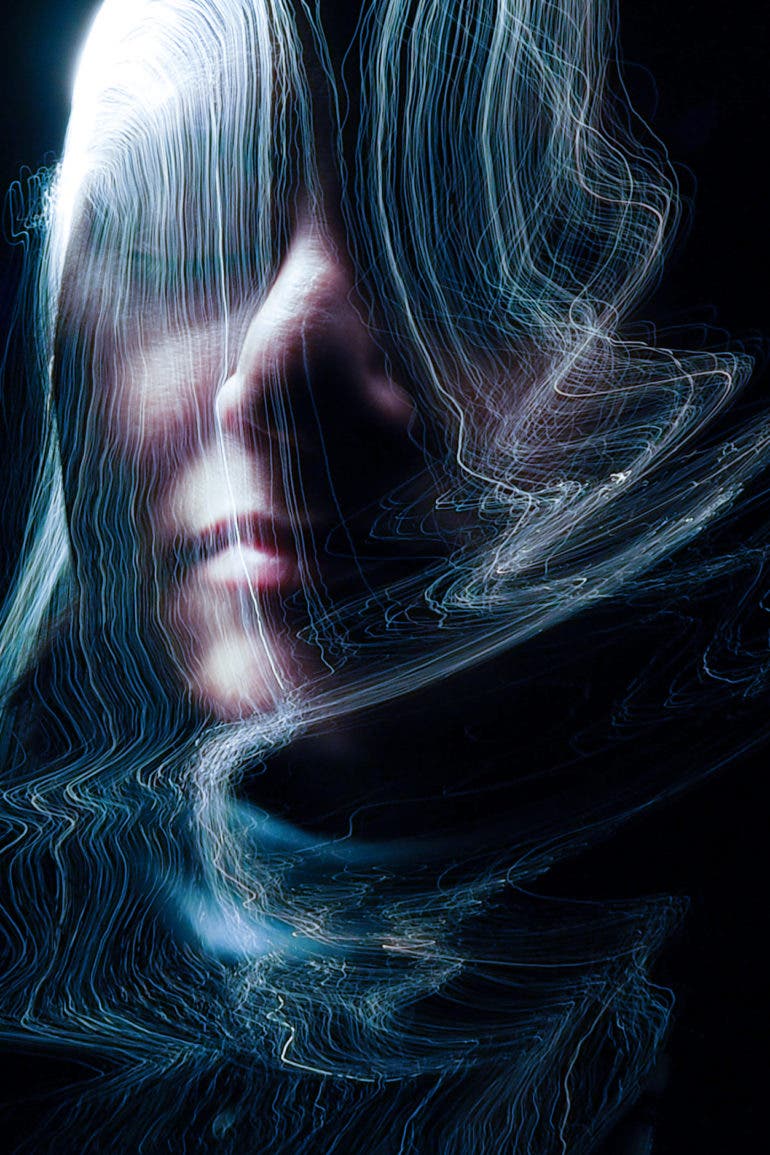
The Phoblographer: When you were starting out, how challenging was it to calculate the right exposure time for light painting? What would make the exposure calculation for such images simpler to arrive at?
Prakash Pancholi: It was quite challenging. Even today, I fumble a bit. It’s a lot less than before, maybe because I don’t shoot a lot. I don’t carry a light meter or any gadgets nowadays because I tend to take my images on my phone, so I don’t get stopped. If I have a camera, 9 out of 10 times, I get stopped. The apps on the phone are good enough. I start with a base exposure that takes care of the ambient light and then wave my lights around. The [best] piece of equipment I have seen for this is the Olympus camera with Live composite; It’s brilliant for light painters. It has a feature where you take your base exposure, and you are sorted. Then the sensor will register only new light pixels it sees. So I don’t have to worry about overexposing the ambient. I need to get my hands on one of them soon.
Having said that, gear is not a showstopper for pursuing light painting. Some of the images I like have been crafted via a phone. As long as you have a light source, a phone that is capable of light trails or longer shutter speeds, you are sorted.
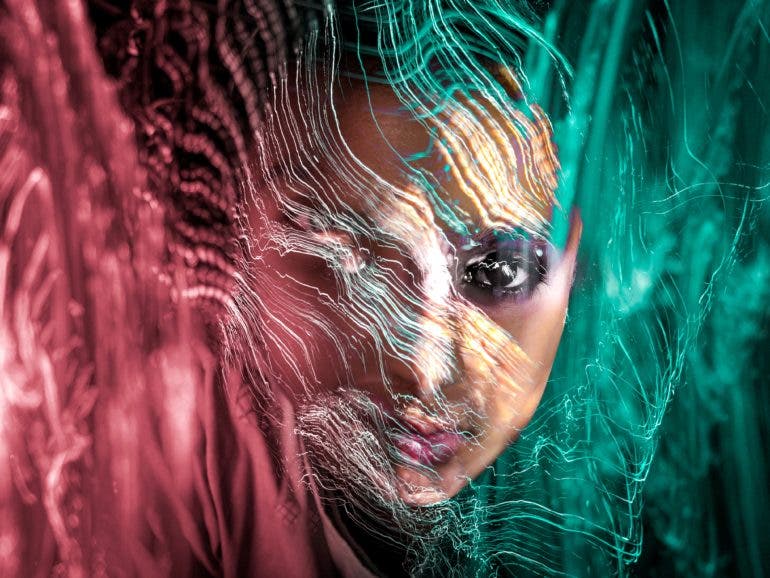
The Phoblographer: What are some of the challenges (technical or otherwise) faced during your shoots?
Prakash Pancholi: I am not a huge technical guy; what you see is what you get. The biggest challenge I have faced is security or police stopping me from doing my thing. Also, if you are in a mental block, your creativity does not flow as easily. But that comes with practice and getting out there and shooting. One thing I have learned, whether you have inspiration or no, just go out there and shoot.
The Phoblographer: Are you able to completely eliminate any traces of the light painter (presumably you) in camera itself, or does this require post-processing?
Prakash Pancholi: Yes, you can remove traces of yourself by shining a strong light that will overlay/burn the pixels of your traces. But it could be done via post-processing as well. I hate post-processing, not because it’s not good, it’s because I don’t know how to use it. Never had the time. I really admire artists that can post-process well, nothing wrong with it.

The Phoblographer: I see spiritual and religious references in many of your images. Tell us more about these and the significance they have
Prakash Pancholi: I personally am very spiritually inclined, and you will see that I don’t only draw a particular symbol. I will draw anything that will come to mind at that time. I believe all of us with our own beliefs can coexist as a single human race, and there will be one thing that will bind us, which is [the] LIGHT of peace. Call it Prakash, Light, Noor etc. – it all means the same. Maybe there is a reason my name is Prakash.

The Phoblographer: Do you head out to shoot with pre-planned ideas, or is it more of weaving different patterns based on how you feel at the time of the shoots? What inspires / influences these patterns?
Prakash Pancholi: When I head out to shoot, it’s mostly to test out a tool that I would have made or modified. In some cases, I will have an idea of how I am going to use that tool and in some cases, I just want to go out and shoot. Usually, it’s the latter, I will go out and wave the light to make a pattern to produce something. It’s been a while I have shot anything. With a full-time job, two small children and parents, I have my hands full. But I need to make time and get out more—no more excuses.
The Phoblographer: Ambient light is of course a factor to be reckoned with. Do you hate it or embrace it in your work?
Prakash Pancholi: I love it; our surroundings are great. The fun starts when you combine both the ambient exposure and your drawing in the image. I have seen that this will make you better at your craft as it forces to you tweak your settings to make sure you don’t screw it up.

The Phoblographer: It’s not always continuous lighting. Some images in your portfolio show disconnected patterns. How do you achieve this effect?
Prakash Pancholi: Most of them are continuous lights; I have just added a strobe in between, which gives that empty space. I like the patterns they create. These are easy to achieve; most flashlights in the market have a stroboscopic feature. Quite a few light painters who are also makers have produced some good flashlights. I quite like the Light Painting paradise RYU’s flashlight, and Frank’s line of flashlights. Haven’t used them, but they seem to be great.
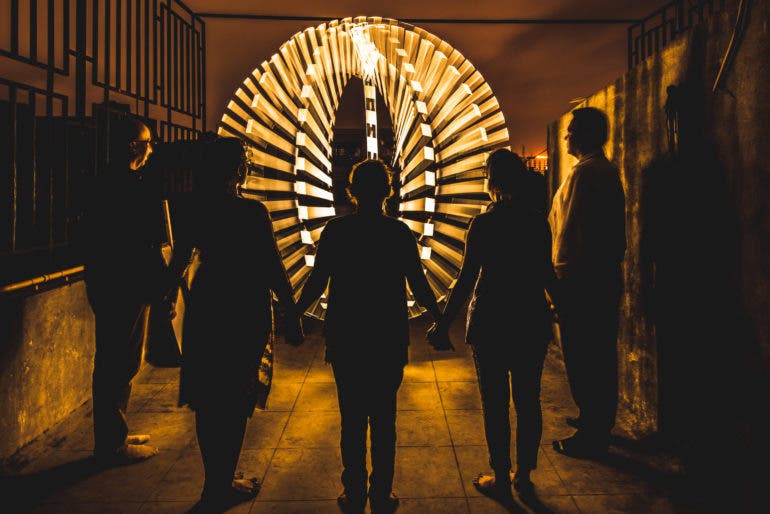
The Phoblographer: What are the safety aspects you employ when it comes to light painting with fire?
Prakash Pancholi: I have shot a few times with fire, and you really must take care. It’s best to have someone with you just in case. If you are working with a model as a subject, discuss with them first and then execute your shot. A lot of time, models have moved because the fire tends to be so close that they can really feel the heat and may become uncomfortable. In the process of moving, they might hurt themselves or the team.
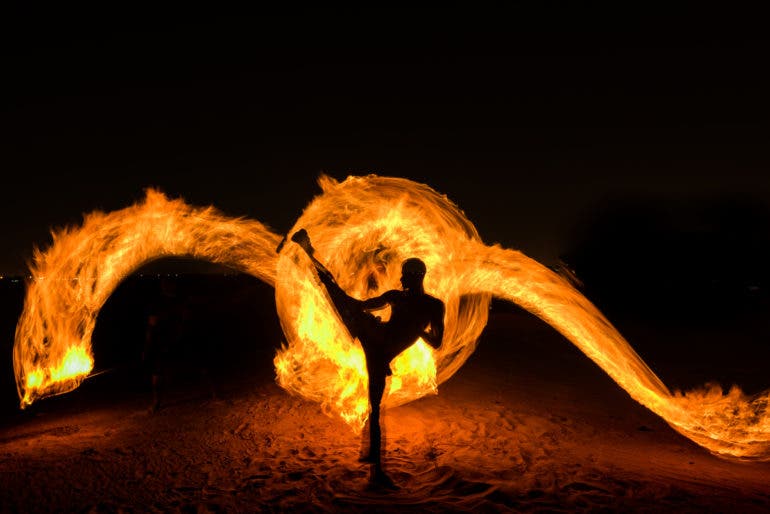
The Phoblographer: In your opinion, what technological advancements could make light painting easier to do?
Prakash Pancholi: Most of my patterns are made with Acrylic sheet that I have cut myself and used DIY to attach them to a flashlight. Using programable lights is one area I will be venturing into soon as I have seen a lot of light painters that have done it. I enjoy making stuff, so this seems to be exciting, so watch this space.
The Phoblographer: I notice a lot of contrast between darkness and light: is there an emotional connection being communicated through your images?
Prakash Pancholi: I am a fan of contrasty images. I don’t do it on purpose, but while shooting or editing, they all turn out to be that way. Maybe because I want light to POP out of my images.

The Phoblographer: What message do you want to send to the world through your light painting images?
Prakash Pancholi: I am no one to send out a message; I am just an old guy trying to draw some images. But if you ask then, all I have to say that the world is a beautiful place, and to make your mark, all you need is a pixel of light. So get out there and shoot.
All images by Prakash Pancholi. Used with permission. Check out his website and Instagram page for more of his work
